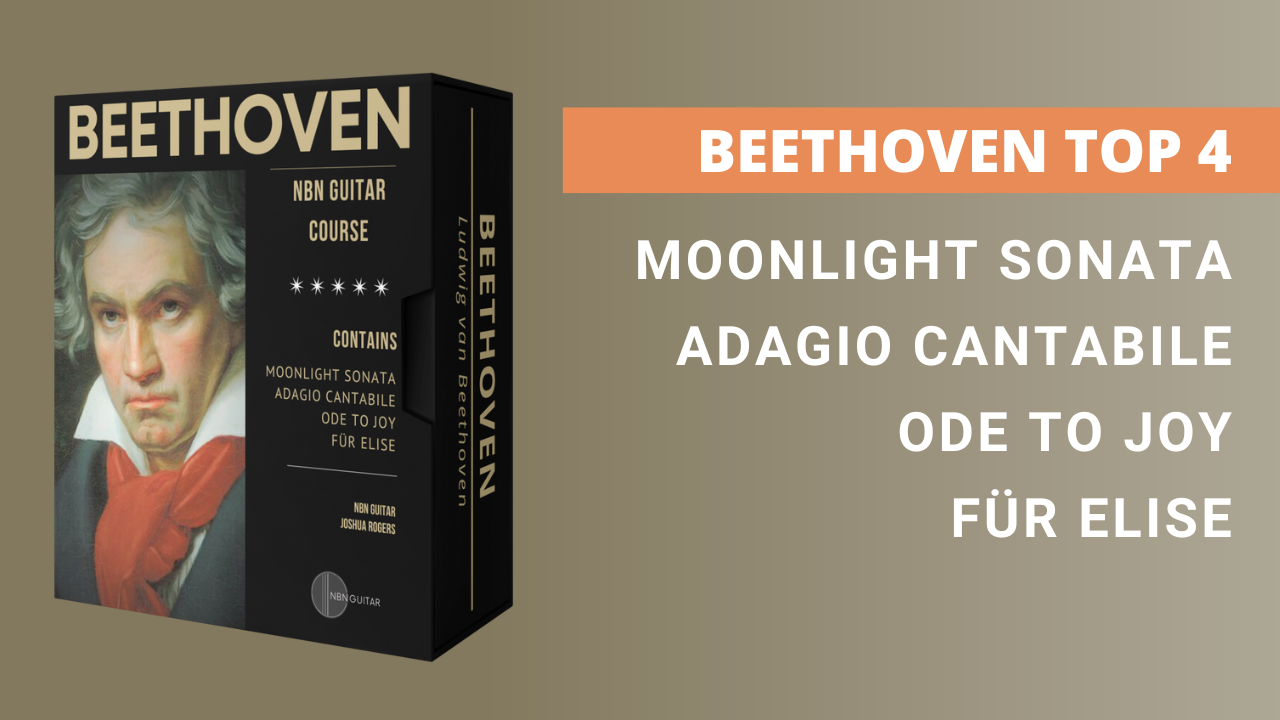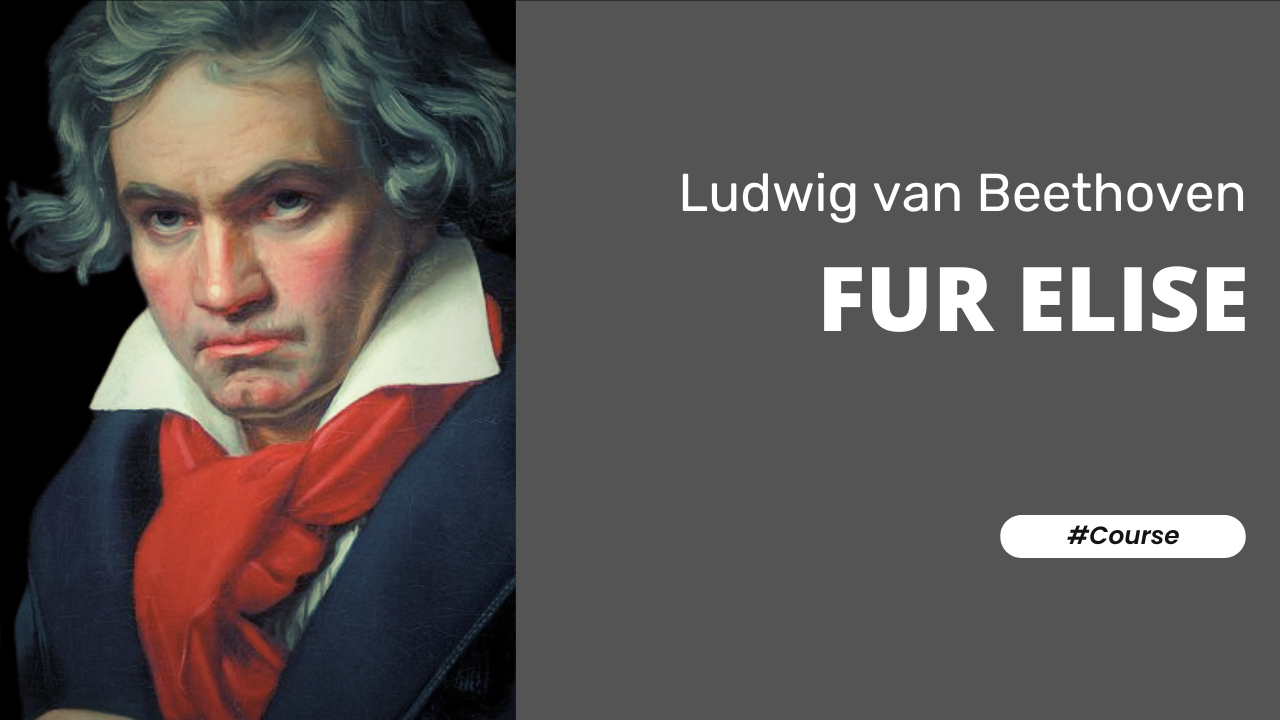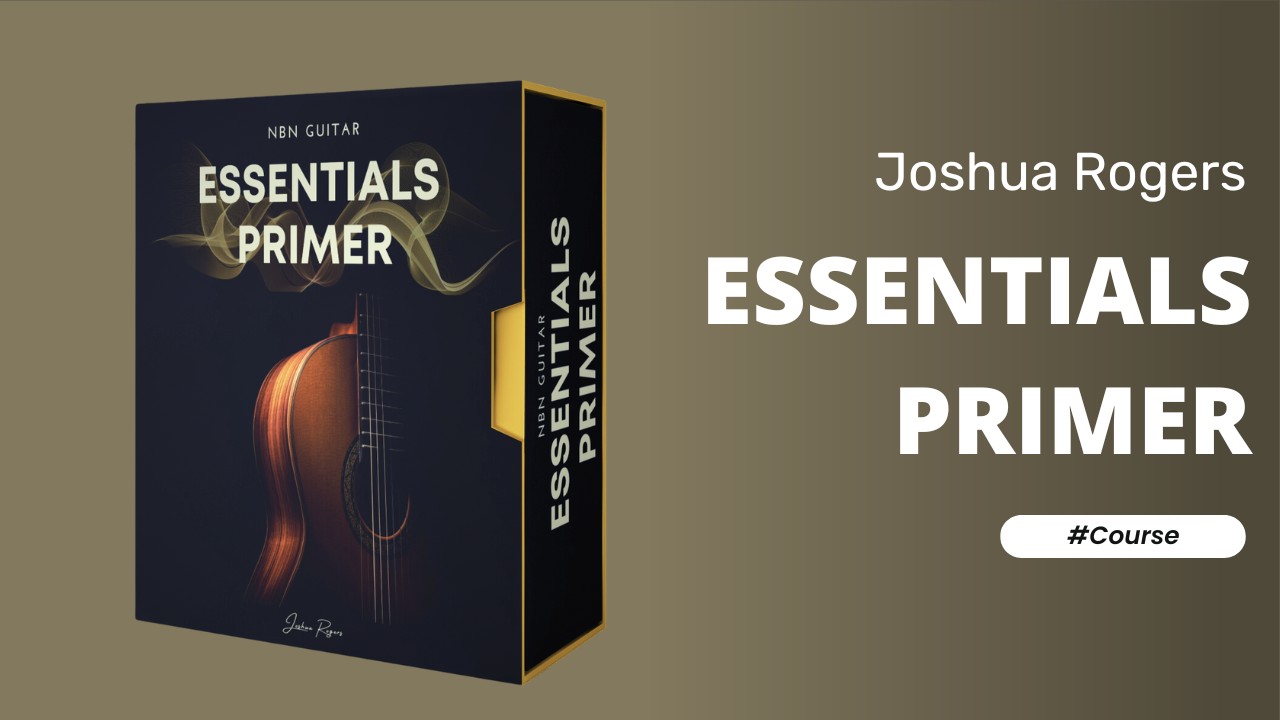Ode to Joy by Ludwig Van Beethoven
Introduction to Ode to Joy Guitar Course
“Ode to Joy” by Ludwig Van Beethoven is a hugely well-known piece of music. I remember it most vividly as the music that played during one of the scenes in the first ‘Die Hard’ movie starring Bruce Willis. This classical guitar lesson starts with me playing the piece through completely. Then I spend a couple of minutes teaching you how to do artificial harmonics because my transcription uses artificial harmonics to open the piece before the melody proper enters.
“Ode to Joy” is typically performed at a moderate tempo, around 120 BPM, which allows for a lively and joyful expression. The melody remains in C major throughout (the original is in the key of D major), without key changes or modulations, ensuring a straightforward yet powerful harmonic structure. The arrangement’s simplicity and beauty make it an excellent choice for beginner guitarists, offering a chance to explore Beethoven’s melodic genius and dynamic contrasts.
After the explanation I give a note-by-note explanation of the entire piece whilst including technical tips such as pivot and guide fingers.
-
The original is in the key of D-major but this transcription is in the easier key of C major
-
I suggest placing a capo at the 2nd fret if you want to play in the original key of D major
Musical Style
Ludwig van Beethoven’s musical style is characterized by its bold innovations, emotional depth, and dramatic contrasts. He is considered a pivotal figure in the transition between the Classical and Romantic eras. Beethoven’s works often feature powerful dynamics, intricate thematic development, and an expansive use of form and harmony. His ability to convey profound emotion through music has made his compositions timeless and universally admired. From symphonies and concertos to sonatas and chamber music, Beethoven’s oeuvre reflects a relentless pursuit of artistic expression and technical mastery.
Notable Points
Five notable pieces by Ludwig van Beethoven:
• Symphony No. 5 in C minor, Op. 67
• Symphony No. 9 in D minor, Op. 125 (“Choral”)
• Piano Concerto No. 5 in E-flat major, Op. 73 (“Emperor”)
• Piano Sonata No. 8 in C minor, Op. 13 (“Pathétique”)
• Violin Concerto in D major, Op. 61
Let your fingers fly!
Josh
Course Instructor
Ode to Joy Course
About this Course
Introduction to Ode to Joy Guitar Course
“Ode to Joy” by Ludwig Van Beethoven is a hugely well-known piece of music. I remember it most vividly as the music that played during one of the scenes in the first ‘Die Hard’ movie starring Bruce Willis. This classical guitar lesson starts with me playing the piece through completely. Then I spend a couple of minutes teaching you how to do artificial harmonics because my transcription uses artificial harmonics to open the piece before the melody proper enters.
“Ode to Joy” is typically performed at a moderate tempo, around 120 BPM, which allows for a lively and joyful expression. The melody remains in C major throughout (the original is in the key of D major), without key changes or modulations, ensuring a straightforward yet powerful harmonic structure. The arrangement’s simplicity and beauty make it an excellent choice for beginner guitarists, offering a chance to explore Beethoven’s melodic genius and dynamic contrasts.
After the explanation I give a note-by-note explanation of the entire piece whilst including technical tips such as pivot and guide fingers.
-
The original is in the key of D-major but this transcription is in the easier key of C major
-
I suggest placing a capo at the 2nd fret if you want to play in the original key of D major
Musical Style
Ludwig van Beethoven’s musical style is characterized by its bold innovations, emotional depth, and dramatic contrasts. He is considered a pivotal figure in the transition between the Classical and Romantic eras. Beethoven’s works often feature powerful dynamics, intricate thematic development, and an expansive use of form and harmony. His ability to convey profound emotion through music has made his compositions timeless and universally admired. From symphonies and concertos to sonatas and chamber music, Beethoven’s oeuvre reflects a relentless pursuit of artistic expression and technical mastery.
Notable Points
Five notable pieces by Ludwig van Beethoven:
• Symphony No. 5 in C minor, Op. 67
• Symphony No. 9 in D minor, Op. 125 (“Choral”)
• Piano Concerto No. 5 in E-flat major, Op. 73 (“Emperor”)
• Piano Sonata No. 8 in C minor, Op. 13 (“Pathétique”)
• Violin Concerto in D major, Op. 61
Let your fingers fly!
Josh
Course Instructor
Ode to Joy Course




